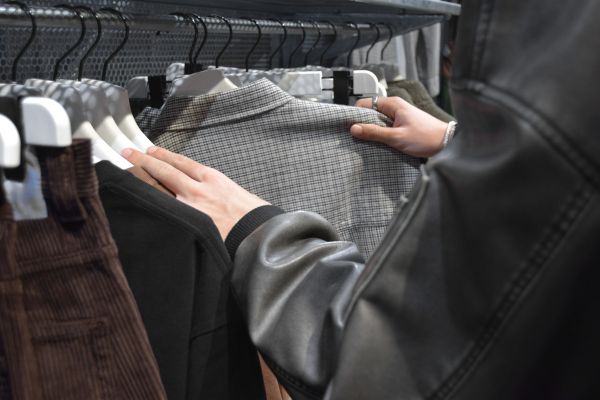As we step boldly into the heart of 2025, the fashion world finds itself swept by subtle yet striking shifts. These are not the sweeping revolutions that redefine entire wardrobes overnight. Instead, they’re nuanced adaptations—micro fashion trends—that ripple through styles with quiet confidence. What makes micro fashion trends 2025 so captivating is their ability to influence global aesthetics without overwhelming them. They’re about finesse over flamboyance, evolution over revolution, and individuality over imitation.
The Rise of Micro Fashion Trends in a Macro World
Fashion has always been cyclical, but 2025 marks a year where small-scale changes are reshaping the larger landscape. Consumers are increasingly drawn to niche details that reflect personal identity, sustainability values, and digital influence. These micro fashion trends in 2025 aren’t defined by a single silhouette or color. Instead, they emerge from subcultures, street style, viral moments, and eco-conscious movements. The beauty lies in their flexibility—they allow wearers to participate in the latest styles without losing their personal touch.
As the fashion industry becomes more fragmented and democratized, these miniature trend shifts hold immense power. They move swiftly through platforms like TikTok, Instagram, and Pinterest, influencing brands to rethink how they design and market their collections. No longer are major fashion houses the sole tastemakers. In 2025, it’s the indie creator, the sustainable artisan, and the digitally savvy fashion lover who drive what’s next.
Sustainability Embedded in Style
A defining element of micro fashion trends 2025 is the deepening integration of sustainability. Not as an afterthought, but as a starting point. Upcycled fashion, biodegradable materials, and slow-fashion sensibilities are no longer fringe concepts—they’re foundational. Designers are zeroing in on specific elements, such as reimagined stitching, fabric blends that reduce waste, and repairable garments that extend a piece’s life.
Rather than overtly eco-themed collections, we’re witnessing the emergence of eco-conscious design subtleties. Organic textures, earth-inspired palettes, and visibly hand-finished elements signal that sustainability is becoming seamlessly embedded in style itself. This approach resonates with Gen Z and millennial consumers who demand authenticity in both design and purpose.
Tech-Infused Textiles Take the Lead
Another compelling micro fashion trend shaping 2025 is the integration of technology at a wearable level. While smart clothing once felt like science fiction, it’s becoming part of daily fashion in subtle yet sophisticated ways. Heat-sensitive fabrics, color-shifting threads, and responsive materials that adapt to environmental conditions are adding both functionality and flair to modern outfits.
What’s interesting about this trend is that it doesn’t scream “futuristic.” Instead, it blends seamlessly into everyday clothing. A coat that adjusts its warmth based on body temperature or a dress that subtly changes hue under different lighting is now part of the modern fashion vocabulary. These innovations reflect how fashion is moving toward a more intuitive and interactive future—one small change at a time.
Retro Revival in Refined Forms
The allure of nostalgia continues to shape fashion, but micro fashion trends 2025 present it through a refined lens. Instead of head-to-toe retro looks, designers are borrowing just one or two elements from past decades and incorporating them into modern outfits. Think ’70s collars on contemporary blouses, ’90s cargo detailing on high-end trousers, or early-2000s shimmer woven subtly into minimalist designs.
This mix-and-match of past and present allows wearers to connect with fashion history while staying grounded in the now. These micro revivals feel fresh, not recycled, because they are reinterpreted with care and precision. It’s less about dressing like you’re from another era and more about referencing the past to elevate today’s style.
Gender Fluidity as a Fashion Norm
Gender-neutral fashion is no longer a trend; it’s becoming a baseline standard. But within micro fashion trends 2025, we’re seeing an even more refined approach to gender fluidity in design. Tailoring is becoming softer for all bodies. Skirts and wide-leg pants are embraced across gender lines without explanation. Fabrics like satin, mesh, and lace are styled based on texture and silhouette rather than traditional gender norms.
This shift isn’t just about clothing—it’s a cultural moment. Fashion is acknowledging the spectrum of gender expression, and micro trends are at the forefront of this transformation. Pieces that were once gender-coded are now appreciated for their aesthetic alone, reinforcing that personal style should transcend categories and labels.
Localized Aesthetics Gain Global Attention
One of the more subtle yet powerful micro fashion trends in 2025 is the global elevation of local aesthetics. Regional crafts, indigenous textiles, and traditional silhouettes are being spotlighted not just as cultural tokens, but as sources of inspiration for high fashion. Whether it’s the embroidery techniques of Eastern Europe or the natural dyeing processes of Southeast Asia, these elements are being reinterpreted for global runways.
What’s compelling here is the authenticity. Designers are collaborating with local artisans, not appropriating from them. This partnership model honors craftsmanship while bringing unique design stories to international audiences. The result is a richer, more diverse fashion narrative—one that celebrates the origins of style as much as its modern evolution.
Digital Influence Shapes Physical Fashion
In a world dominated by screens, the lines between virtual and physical fashion continue to blur. While digital fashion may still be growing, its influence on physical trends is undeniable. Micro fashion trends 2025 are heavily shaped by what performs well on digital platforms. A fabric that catches the light on camera, a color that pops in reels, or a detail that encourages interaction—all these are considered during design.
Designers are thinking beyond the runway and even beyond the mirror. The question is now: how will this garment look in a story, in a filter, or in augmented reality? Fashion is not only worn—it’s shared, liked, and posted. These micro elements might seem minor, but in the digital space, they carry enormous influence.
The Return of Personalization
Perhaps one of the most human-centric micro fashion trends of 2025 is the return of personalization. Consumers are gravitating toward pieces that reflect their identity, values, or even sense of humor. Custom embroidery, monogrammed accessories, and garments designed with the buyer’s input are experiencing a quiet renaissance.
This trend reflects a broader desire for connection in a fast-paced, algorithm-driven world. Fashion isn’t just a statement—it’s a conversation. When someone wears a jacket embroidered with their birth city or shoes dyed in their favorite shade, it sparks interaction. These micro gestures are deeply meaningful, enhancing the emotional value of clothing in a way that mass-produced pieces cannot replicate.
Conclusion: The Power of Subtle Shifts
The overarching message of micro fashion trends 2025 is that small details can carry big meaning. These trends don’t rely on loud declarations or massive overhauls. Instead, they offer nuanced, intelligent, and deeply personal style shifts that reflect where fashion is heading—toward inclusivity, sustainability, innovation, and individuality.
As designers and consumers alike embrace these quiet revolutions, fashion becomes more than seasonal change. It becomes an evolving dialogue between past, present, and future; between the local and global; and most importantly, between clothing and identity. In 2025, it’s not about who shouts the loudest on the runway—it’s about who listens closely enough to spot the beauty in the small things.





